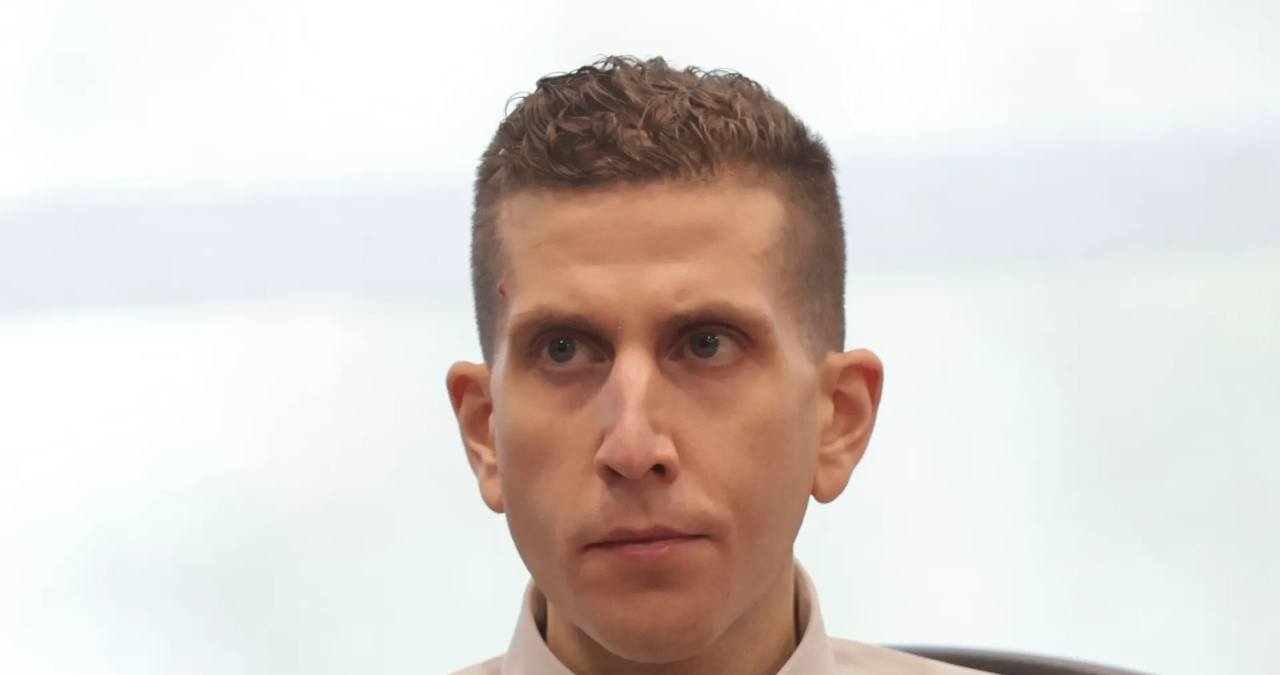Get deep insights into the Bryan Kohberger case. Explore expert analysis, facts, background, public reaction, and the ongoing investigation in an easy-to-read format.
Who is Bryan Kohberger?
Bryan Kohberger became a household name in late 2022, not for his professional achievements or any public service, but for being at the center of one of the most shocking crime stories in recent American history. A criminology PhD student, Kohberger was thrust into the media spotlight following his arrest in connection to the brutal slayings of four University of Idaho students.
Before his name was plastered across news headlines, Bryan Kohberger was just another student deeply engrossed in studying criminal behavior. He had an academic background that made the arrest all the more intriguing: someone who was not only interested in understanding the criminal mind but was allegedly living out a violent scenario straight out of a textbook.
The Idaho Murders That Shocked the Nation
In November 2022, the small, tight-knit community of Moscow, Idaho, was rocked by the horrific murders of four University of Idaho students. The victims were found stabbed to death in a rental home near the campus, and the brutality of the act left the community—and the nation—in stunned silence.
There were no immediate suspects, no clear motive, and no murder weapon found at the scene. This created a vacuum that was quickly filled by speculation, internet sleuthing, and round-the-clock media coverage. The Bryan Kohberger connection wouldn’t surface until weeks later, but by then, the world was watching.
Kohberger’s Background in Criminology
What makes Bryan Kohberger’s case especially unsettling is his academic background. He was a PhD candidate in criminology at Washington State University, just a short drive from the University of Idaho. According to reports, Kohberger had previously studied psychology and criminal justice, showing a long-standing interest in the minds of criminals.
He wasn’t just studying from a distance either. Some of his classmates and professors described him as deeply engaged in topics like serial killers, forensics, and the justice system. This raised disturbing questions: was he studying crime to understand it, or was he using that knowledge to commit one?
The Arrest and Evidence Presented
The arrest of Bryan Kohberger was a dramatic development. He was apprehended in Pennsylvania, over 2,000 miles away from the crime scene. Authorities cited DNA evidence, cell phone records, and surveillance footage linking him to the murders. One of the most compelling pieces of evidence came from a knife sheath found at the crime scene, reportedly carrying Kohberger’s DNA.
Cell tower data showed his phone pinging near the victims’ residence multiple times in the weeks leading up to the murders. It was this digital trail that investigators say helped them zero in on their suspect. Law enforcement also reportedly tracked his car, a white Hyundai Elantra, which matched surveillance images from the crime scene area.
Internet Reaction and True Crime Obsession
Once the news broke, the internet exploded. Forums like Reddit, TikTok, and Twitter became buzzing hives of speculation and amateur sleuthing. Hashtags related to Bryan Kohberger and the Idaho murders trended for weeks. While some users tried to piece together timelines, others dove deep into his online history and academic background.
The case highlighted the growing trend of true crime obsession in America. People who had never heard of Moscow, Idaho, suddenly had maps of the town bookmarked and were analyzing police body cam footage like professionals. Bryan Kohberger quickly became a true crime anti-hero, a real-life character in an unfolding mystery.
The Psychology Behind the Crime
Analyzing Bryan Kohberger through a psychological lens is both chilling and complex. If the allegations are true, we may be dealing with a classic example of a narcissistic personality wrapped in academic camouflage. Experts have noted that people with a deep interest in criminology might not always be driven by curiosity alone. For some, it’s a fascination that borders on obsession.
Kohberger’s alleged behavior before and after the murders, including his return to school and demeanor during classes, has been dissected by psychologists and criminologists. Many wonder how someone could allegedly commit such a heinous act and then return to “normal life” without a hitch. It raises critical questions about the nature of psychopathy and criminal mimicry.
Media Coverage and Ethical Boundaries
The case also reignited discussions about the role of media in high-profile investigations. From 24-hour news cycles to breaking Twitter updates, Bryan Kohberger’s name and face became almost inescapable. While this level of coverage ensures public awareness, it also treads a fine ethical line.
Questions about presumption of innocence and trial by media surfaced. Experts warned about the dangers of forming public opinions before court proceedings had even begun. Yet, in the digital age, controlling narrative and perception is nearly impossible once a story catches fire.
Court Proceedings and Legal Strategy
As of now, Bryan Kohberger has been formally charged and is awaiting trial. His legal team has indicated that he plans to fight the charges, pleading not guilty. The case is shaping up to be one of the most watched trials in recent history, with every legal twist and turn dissected in real-time.
The defense is expected to challenge the admissibility of certain evidence, including the DNA link and digital tracking. Meanwhile, the prosecution will likely build a narrative of premeditation, supported by Kohberger’s movements and behavioral patterns. It’s going to be a legal chess match played under the intense spotlight of public scrutiny.
Academic Institutions Respond
Following the arrest, both Washington State University and the University of Idaho were thrust into an uncomfortable spotlight. For WSU, having a PhD student linked to such a crime prompted internal reviews and broader questions about how academic institutions should monitor student well-being and behavior.
Some departments are now considering more robust mental health evaluations and flagging mechanisms for students showing concerning behaviors. The academic community has been forced to reckon with the idea that even those studying crime can sometimes become its perpetrators.
Public Trust in the Justice System

The Bryan Kohberger case has had ripple effects beyond just the universities and communities involved. It’s prompted nationwide discussions about trust in the justice system. From the speed and scope of the investigation to the careful build-up to his arrest, the process has been both praised and critiqued.
For many, the case serves as a reminder that justice can be slow, meticulous, and reliant on a range of technologies and inter-agency cooperation. Trust is paramount, and this case will either strengthen it or expose gaps depending on how the trial unfolds.
Social Media and the Spread of Misinformation
As with many high-profile cases, social media became a double-edged sword. While it allowed for real-time updates and discussions, it also became a breeding ground for misinformation. False sightings, conspiracy theories, and unverified rumors about Bryan Kohberger spread like wildfire.
Platforms had to walk a tightrope between allowing free speech and mitigating harm. Moderators on Reddit and Facebook groups implemented strict rules, but even then, the sheer volume of content made it nearly impossible to control narratives. It’s a stark reminder of how quickly facts can become distorted in the digital age.
Quotes From Experts and Investigators
“This is one of the most complex criminal investigations in recent memory, especially given the academic background of the suspect.” – Former FBI profiler
“The public must remember that Bryan Kohberger is innocent until proven guilty. The court of law, not public opinion, will decide his fate.” – Criminal Defense Attorney
Table: Key Details About the Case
| Detail | Description |
|---|---|
| Suspect | Bryan Kohberger |
| Victims | Four University of Idaho students |
| Location | Moscow, Idaho |
| Arrest Location | Albrightsville, Pennsylvania |
| Key Evidence | DNA on knife sheath, cell data, surveillance footage |
| Academic Background | PhD student in criminology at WSU |
| Legal Status | Charged, awaiting trial |
Frequently Asked Questions
Q: Who is Bryan Kohberger? A: Bryan Kohberger is a criminology PhD student who was arrested in connection to the murders of four University of Idaho students in late 2022.
Q: What evidence links Kohberger to the crime? A: Investigators cited DNA found on a knife sheath, cell phone records, surveillance footage, and car data linking him to the crime scene.
Q: Has Bryan Kohberger confessed? A: No, Bryan Kohberger has pleaded not guilty and has not made any public confession regarding the charges.
Q: Why is this case getting so much attention? A: The brutal nature of the crime, combined with Kohberger’s academic background in criminology, created a unique and shocking narrative that captivated the public.
Q: What happens next in the legal process? A: Bryan Kohberger’s case is moving toward trial. Both the prosecution and defense are preparing their arguments, and pre-trial motions are ongoing.
Conclusion: A Case That Will Shape Legal and Academic Discussions for Years
The Bryan Kohberger case is more than just a tragic crime story. It’s a narrative filled with contradictions, chilling questions, and societal implications. From the intersection of academic study and real-world crime to the role of digital footprints in modern investigations, this case is a landmark in many ways.
As the legal process unfolds, the world watches not just for a verdict, but for answers to larger questions about criminal behavior, media responsibility, and justice in the digital age.




